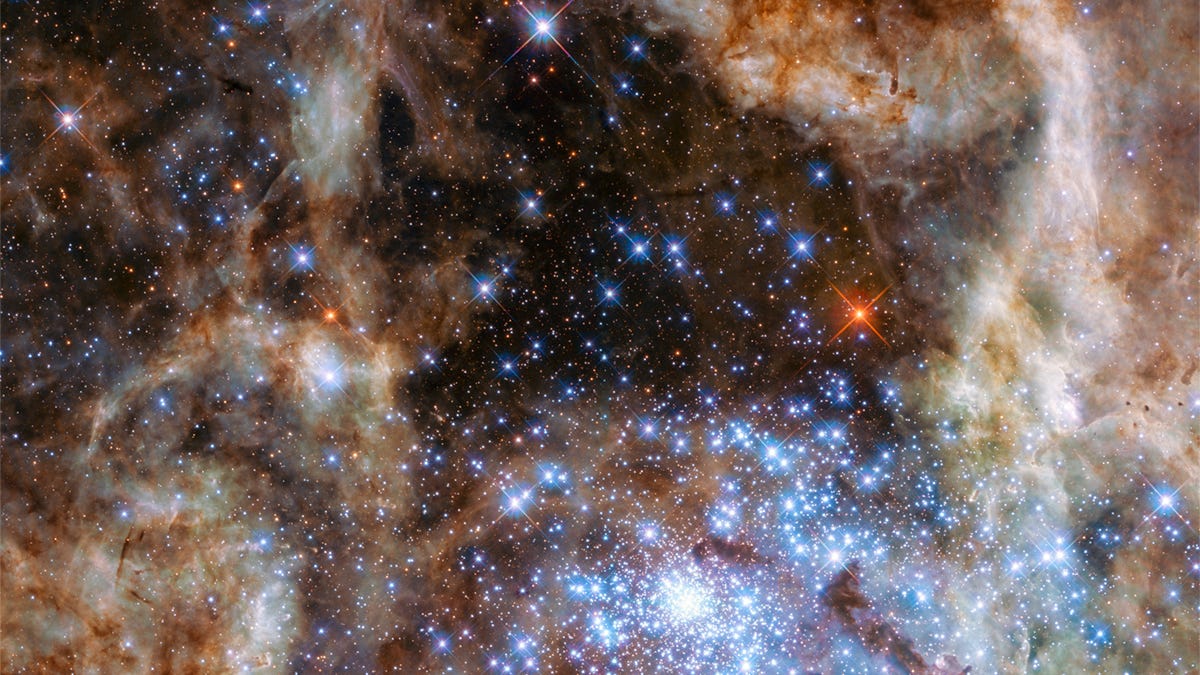Hubble finds a celestial Monster Mash
In a cluster of new stars, the Hubble Space Telescope has identified nine monsters with masses all at least 100 times that of the sun.
Some 170,000 light-years away in the constellation of Dorado, deep in the heart of the Tarantula Nebula, is a cluster of very young, very bright stars. The R136 cluster, as it is rather unromantically known, has an unusually high rate of star formation.
It's so bright that it produces the majority of the energy that makes the Tarantula Nebula, around 1,900 light-years across, visible from Earth.
The energy these stars emit, however, is mostly in the ultraviolet spectrum. So an international team of scientists led by Paul Crowther at the University of Sheffield in the UK used the ultraviolet spatial resolution capability of the Hubble Space Telescope's Imaging Spectrograph to take a closer look.
"The ability to distinguish ultraviolet light from such an exceptionally crowded region into its component parts, resolving the signatures of individual stars, was only made possible with the instruments aboard Hubble," Crowther said in a statement.
How the stars appear viewed in ultraviolet (left) and a pseudo-image showing spectra, which allows scientists to analyse the properties of the individual stars.
What the scientists found was extraordinary. Inside the cluster are dozens of stars over 50 times the mass of the sun, and nine enormous monsters over 100 times the mass of the sun. And it's not all just mass, either: Together, the stars are 30 million times brighter than the sun.
Four of these stars were already known, discovered by Crowther and his team in 2010, measuring over 150 solar masses. Up until that point, 150 solar masses was thought to be the upper limit for how big stars could get. This new survey opens up new opportunities for studying how these cosmic leviathans form, since it's still a huge mystery.
"There have been suggestions that these monsters result from the merger of less extreme stars in close binary systems," said study co-author Saida Caballero-Nieves.
"From what we know about the frequency of massive mergers, this scenario can't account for all the really massive stars that we see in R136, so it would appear that such stars can originate from the star formation process."
However, the nine stars are still not the most massive stars in the universe. That record still goes to a star in the cluster called R136a1, which clocks in at 256 solar masses.
If you want a wallpaper-sized version of the photo of R136, you can find them here.


